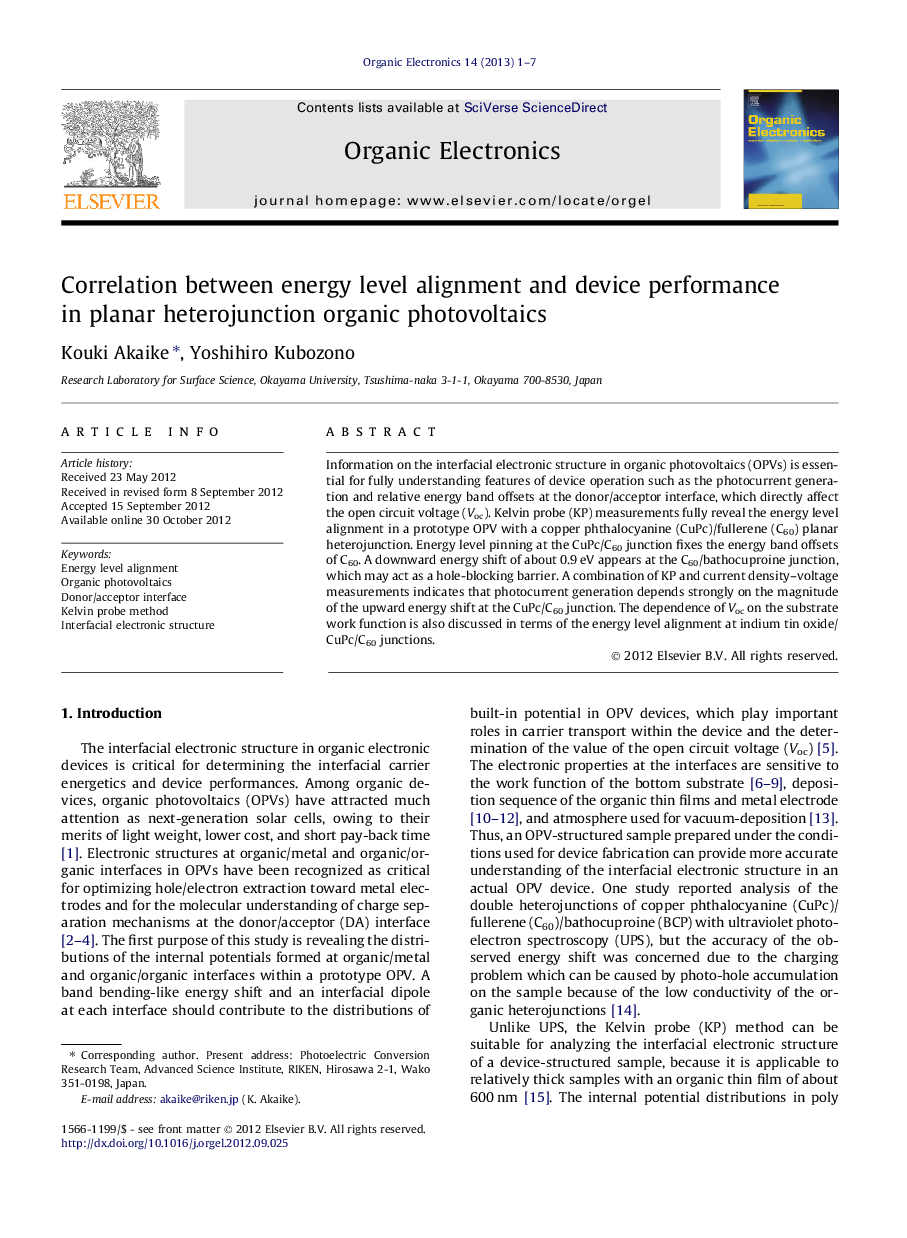| Article ID | Journal | Published Year | Pages | File Type |
|---|---|---|---|---|
| 1263928 | Organic Electronics | 2013 | 7 Pages |
Information on the interfacial electronic structure in organic photovoltaics (OPVs) is essential for fully understanding features of device operation such as the photocurrent generation and relative energy band offsets at the donor/acceptor interface, which directly affect the open circuit voltage (Voc). Kelvin probe (KP) measurements fully reveal the energy level alignment in a prototype OPV with a copper phthalocyanine (CuPc)/fullerene (C60) planar heterojunction. Energy level pinning at the CuPc/C60 junction fixes the energy band offsets of C60. A downward energy shift of about 0.9 eV appears at the C60/bathocuproine junction, which may act as a hole-blocking barrier. A combination of KP and current density–voltage measurements indicates that photocurrent generation depends strongly on the magnitude of the upward energy shift at the CuPc/C60 junction. The dependence of Voc on the substrate work function is also discussed in terms of the energy level alignment at indium tin oxide/CuPc/C60 junctions.
Graphical abstractFigure optionsDownload full-size imageDownload as PowerPoint slideHighlights► The internal potential in CuPc/C60 solar cell was studied with Kelvin probe (KP). ► Energy level pinning occurs at the CuPc/C60 junction. ► The energy drop of ∼0.9 eV was observed at C60/BCP junction. ► Photovoltaic properties of the same specimen as KP measurements were studied. ► A large upward energy shift at the CuPc/C60 junction suppresses photocurrent.
